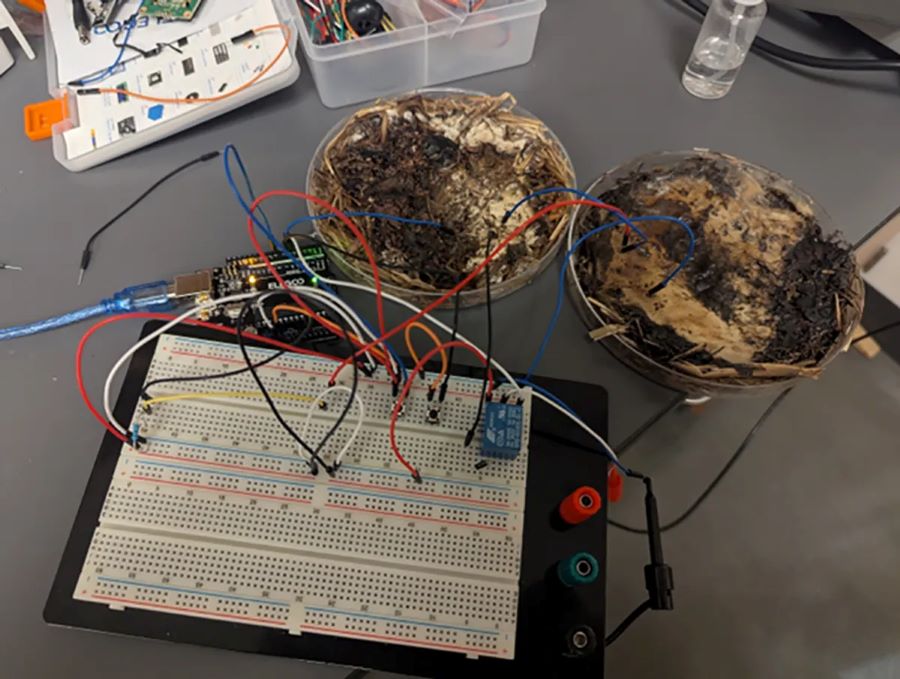A variety of delicious mushrooms could power the next generation of eco-friendly computers
A team of scientists at the Ohio State University has discovered that common edible mushrooms, such as shiitake (Lentinula edodes), can store and process information like a computer chip — offering a greener, cheaper, and biodegradable alternative to traditional electronics.
Their research, published in PLOS ONE, found that mushrooms can act as organic memristors — devices that “remember” past electrical states. This ability allows them to function as both memory storage and processors, mimicking the way neurons in the brain transmit and retain information.
More to read:
Austrian scientists develop board circuits using mushrooms
“Being able to develop microchips that mimic actual neural activity means you don't need a lot of power for standby or when the machine isn't being used. That's something that can be a huge potential computational and economic advantage,” Dr. John LaRocco, lead author of the study and research scientist at Ohio State’s College of Medicine, said in a university statement.
Turning mushrooms into microchips
To test the idea, LaRocco and his team grew shiitake and button mushrooms, dehydrated them, and connected their mycelium — the network of fungal threads — to electronic circuits. The fungi were then exposed to varying voltages and frequencies to see how they responded.
“We would connect electrical wires and probes at different points on the mushrooms because distinct parts of it have different electrical properties,” LaRocco explained.
“Depending on the voltage and connectivity, we were seeing different performances.”

The mushroom-based memristors were able to switch between electrical states nearly 6,000 times per second with about 90% accuracy. Performance declined at higher voltages, but like a biological brain, it improved when more mushrooms were linked together.
“Mycelium as a computing substrate has been explored before in less intuitive setups, but our work tries to push one of these memristive systems to its limits,” said LaRocco.
Greener computing through fungi
Unlike conventional semiconductors that require rare-earth metals and generate toxic waste, fungal electronics are biodegradable and can be produced at low cost using minimal energy. They also avoid the geopolitical and environmental problems tied to mining rare materials.
More to read:
Japanese scientists discover signs of basic intelligence in obscure fungus
Society has become increasingly aware of the need to protect our environment and ensure that we preserve it for future generations, so that could be one of the driving factors behind new bio-friendly ideas like these, another author noted.
From compost heaps to space
The researchers believe fungal computing could scale in several directions — from small systems for wearable devices and autonomous vehicles to larger setups for data processing or space exploration. Shiitake mushrooms, in particular, are radiation-resistant, making them suitable for harsh environments.
Though still in early development, mushroom-based computing could point the way toward a future where digital technology grows naturally — and biodegrades just as easily.
More to read:
Swiss scientists develop edible, living plastic alternative made from mushrooms
Delicious mushrooms
If you aren’t happy with the fungi’s computing performance, you’ll be able to use them for what they are primarily designed for: consumption as food. In fact, shiitake mushrooms are one of the most popular edible mushrooms worldwide, prized for their rich, savory umami flavor and meaty texture.
When cooked, shiitakes develop a deep, almost smoky taste that works well in stir-fries, soups, risottos, and even grilled dishes. They’re also nutritious, being a good source of B vitamins, fiber, and minerals like selenium and copper, and they contain compounds thought to support immune health.
Fresh or dried, they’re a staple in East Asian cuisines — especially Japanese, Chinese, and Korean cooking. Bon appetite!



![[video] Putin rules from shadows: Investigation finds Russian leader rarely works in Moscow](/news_img/2025/11/11/news1_mediu.jpg)



![[video] Putin used sex workers to sideline foes and rise to power](/news_img/2025/11/07/news2_mediu.jpg)